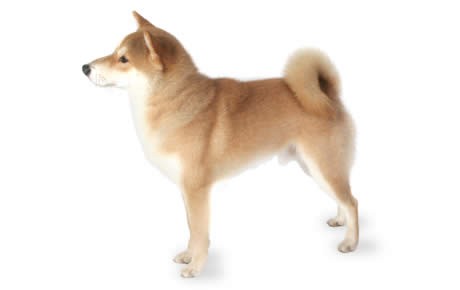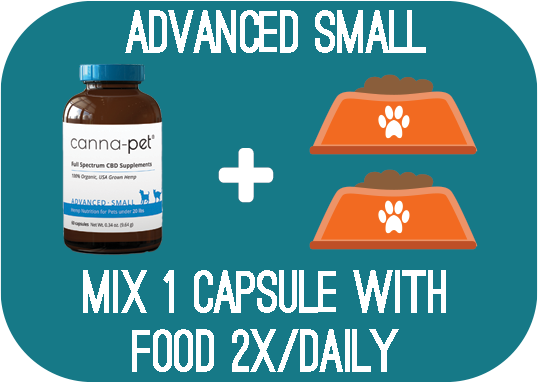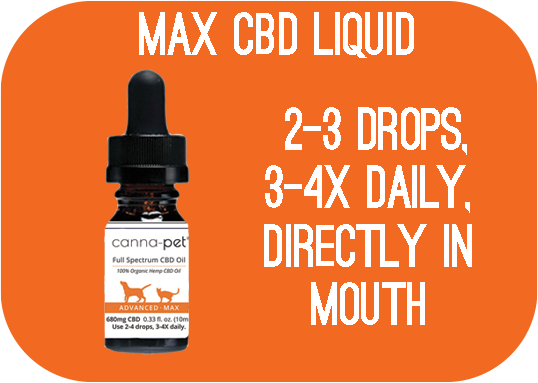Shiba Inu Breed Guide

Breed Group:
Companion Dogs
Get 30% off
Join our Newsletter
Sign Up Today
Shiba Inu Breed Information & Background
The Shiba Inu’s heritage can be traced back to Japan along with the Akita, Shikoku, Kai Dog, Hokkaido, and Kishu. Back then, Shiba Inus were used as hunting dogs – primarily hunting small game and birds.
The Shiba Inu breed was almost wiped out during World War II. Many dogs died during the bombing raids or succumbed to distemper in the post-war years. The dogs who did survive the war were brought from the countryside into more urban areas, where breeding programs were established.
The first Shiba Inu came to America in 1954. However, there is not much documented information available about them until the 1970s. The first U.S. litter was born in 1979 and they became an AKC registered breed in 1993.
Shiba Inu Temperament & Personality
Possessing strong-willed and sometimes stubborn characteristics, Shiba Inus are smart, confident dogs who do best with an equally confident, assertive owner. In general, Shiba Inus have a good-natured and affectionate personality with family members but tend to be wary of strangers.
Because of their bold personality, Shiba Inus don’t always get along well with other dogs, especially if they have not been spayed or neutered. They also may not be as willing to share their food, toys, or territory as other dog breeds are.
Shibas are smart dogs; however, training them can be tricky. Most Shiba Inus pick up on commands and cues quickly, but will oftentimes only listen when they feel like it.
Is it Hard to Train a Shiba Inu?
As mentioned above, Shiba Inus can be difficult to train due to their free-thinking, sometimes stubborn behavior. Therefore, it is recommended that Shiba owners consult with a professional dog trainer who has experience training Shiba Inus and understands the Shiba temperament and personality.
When training your Shiba Inu, it is important to maintain a calm, assertive demeanor. This can understandably be difficult, as Shibas make their owners work hard for their position as a leader. Therefore, when your Shiba does something good, it is important that you shower them with plenty of praise and treats.
Consistency is key when it comes to training a Shiba Inu. If you give your Shiba any leeway, they will surely use it as an excuse to take charge and walk all over you.
Once your Shiba understands and follows basic commands, it is recommended that they participate in an advanced activity like agility training. This will allow them to use their minds and bodies as well as give them a specific job to do. Start socializing your Shiba Inu early on so that they don’t grow up to be mistrustful of strangers and other dogs.
Shiba Inu’s Exercise Requirements
Despite their smaller stature, Shiba Inus are active dogs. In order to maintain Shiba Inu health as well as an even temperament, they require a lot of vigorous exercise each day. Take your Shiba out for multiple walks a day and make sure that they have plenty of time to run.
Because Shiba Inus generally don’t get along well with other dogs, taking them to the dog park is not always the best way to ensure they get enough exercise. Therefore, it is recommended that Shibus live in a home with a large fenced-in yard.
To ensure that your Shibu is never bored, provide them with plenty of interactive toys and games. Your Shibu is just as happy chasing balls in the yard as they are solving a puzzle toy inside.
Shiba Inu Lifespan & Longevity
Shiba Inu life expectancy typically ranges anywhere from 12 to 16 years.
Are Shiba Inu’s a Popular Breed?
The Shiba Inu has been increasing in popularity in recent years and is currently ranked 44th among the 155 AKC recognized breeds.
Shiba Inu’s Feeding Recommendations
It is recommended that you feed your Shiba Inu approximately ½ to 1 ½ cups of a high-quality dry dog food each day, divided into two meals. When looking for kibble for your Shiba, look for products that list meat as a primary source of protein.
Also, try to avoid dog foods with wheat, corn, or soy as its main ingredients as well as foods with a lot of by-products in the ingredients list.
Grooming a Shiba Inu
Shiba Inus have a beautiful thick double coat that comes in three main colors: orange-red, urajiro, and sesame. Some Shibas have unique white markings on the tip of their tail, on their forelegs, or hind legs. The outer coat is relatively stiff and straight, while the inner coat is softer and thicker.
Shiba Inus shed moderately throughout the year. However, they do shed heavily twice a year, during which time you may need to brush them more often than you normally would in order to rid your dog of the excess hair.
Because Shibas are naturally clean and odor-free dogs, they are relatively easy to maintain grooming-wise. It is recommended that you brush them about once a week to remove dead hair and distribute oils. Professionals also recommend that you bathe your Shiba as necessary. Most Shiba owners tend to bathe their dog every three to four months.
For optimal Shiba Inu health, brush your Shiba Inu’s teeth at least two to three times a week. This will help to prevent gum disease, remove tartar buildup, and control bad breath. Also, be sure to trim your Shiba Inu’s nails once or twice a month as necessary. This will help prevent tearing and other potentially painful problems.
Are Shiba Inus Good with Kids?
Shiba Inus are good family dogs as long as they have gone through proper obedience and socialization training. They get along with children who understand how to interact with dogs and who treat them with kindness and respect. However, as with all dog breeds, it is important that children are always supervised when they are around dogs.
Shiba Inu Health Problems
While the Shiba Inu is a relatively healthy dog, they are prone to certain health problems and conditions. These include:
- Chylothorax: Chylothorax is a condition that causes a buildup of fluid in a dog’s chest cavity. Signs of chylothorax include difficulty breathing, a loss of appetite, coughing, and lethargy. Shiba Inus are one of the few dog breeds who are prone to this disorder. It generally occurs in Shiba’s younger than two years old.
- Glaucoma: This condition is characterized by extra pressure being placed on a dog’s eye – causing inadequate fluid drainage. If left untreated, this disorder can lead to permanent optic nerve damage and blindness. Shiba Inus are genetically predisposed to this condition.
- Epilepsy: This is an inherited trait that Shiba Inus are predisposed to. Canine epilepsy can cause seizures ranging from mild to severe. Signs of epilepsy in dogs include collapsing, muscle twitching, loss of consciousness, and stiffening, among others.
- Hypothyroidism: Hypothyroidism occurs when a dog’s thyroid gland doesn’t produce enough thyroxine – a hormone that controls their metabolism. Hypothyroidism is linked to a variety of other conditions including hair loss, epilepsy, obesity, and lethargy. Shiba Inus, along with Dachshunds, Boxers, and Cocker Spaniels, are prone to developing hypothyroidism.
Other Recommendations:
National Breed Website: National Shiba Club of America
Rescues: National Shiba Inu Rescue





